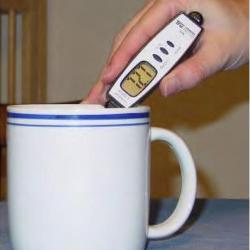Source Institutions
Source Institutions
Add to list Go to activity

In this activity (pages 5-7), learners investigate the properties of smart materials, which are materials that respond to things that happen around them. Learners are introduced to the concept of a transition temperature, which is the temperature at which the smart material changes from one solid phase to another. Below this temperature, Nitinol is soft, bendable, and if you bend it, it will keep its bent shape. Above this temperature, Nitinol is stiff, and if you try to bend it, it will spring back. In this activity, learners design their own experiment to determine the transition temperature of a piece of Nitinol wire. Safety note: Young learners should have adult supervision. [Activity is publicly available through a web crawler capture on Archive.org.]
- Under 5 minutes
- 10 to 30 minutes
- $5 - $10 per student
- Ages 8 - adult
- Activity, Experiment/Lab Activity
- English
Quick Guide
Materials List (per student)
- Piece of Nitinol wire
- Bowls or containers
- Cold water and hot water (you may need to heat this water above the temperature at which it comes out of the tap)
- Microwave or hot plate (if needed to heat water)
- Thermometer that measures temperatures from 0 to 100 degrees Celsius
Subjects
-
Engineering and Technology
-
Engineering
- Metallurgy and Materials Engineering
-
Engineering
-
Mathematics
-
Data Analysis and Probability
- Data Collection
-
Data Analysis and Probability
-
Physical Sciences
-
Heat and Thermodynamics
- Heat and Temperature
-
Chemistry
- Chemical Bonding
-
States of Matter
- Solids
-
Structure and Properties of Matter
- Atomic Structure
-
Heat and Thermodynamics
-
The Nature of Science
-
The Scientific Process
- Asking Questions
- Conducting Investigations
- Gathering Data
-
The Scientific Process
Audience
To use this activity, learners need to:
- see
- touch
Learning styles supported:
- Involves hands-on or lab activities
Other
Components that are part of this resource:
Access Rights:
- Free access
By:
- Jordan, Catherine
Rights:
- All rights reserved, Cornell Center for Materials Research Educational Programs, 2012
Funding Source:
- NSF Grant DMR, 1120296
